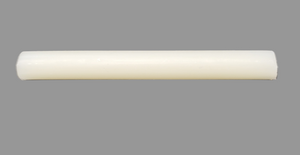
Bees Wax Natural (1 oz).
Bees Wax is a versatile and natural product widely used in jewelry making. Let's explore its uses and benefits:
What is Bees Wax used for in jewelry making, and what are the best uses for it?
Bees Wax is commonly used in jewelry making for various purposes. Here are the best uses for Bees Wax:
-
Wirework and wire wrapping: Applying a thin layer of Bees Wax on jewelry wire helps to reduce friction and makes it easier to shape and manipulate. It provides a smooth surface for the wire, allowing for more precise and controlled wirework.
-
Lubrication for tools: Bees Wax can be applied to various jewelry-making tools such as saw blades, drill bits, and files to lubricate them. This reduces friction and helps the tools to glide through the metal smoothly, resulting in cleaner cuts and less wear on the tools.
-
Thread and cord conditioning: When working with threads or cords in jewelry making, Bees Wax can be used to condition and strengthen them. Rubbing the thread or cord against Bees Wax adds a protective coating, reducing fraying and making it easier to thread through beads or components.
What are some unique uses for Bees Wax in jewelry making?
-
Preventing metal oxidation: Bees Wax can be used as a protective coating on metal surfaces to slow down oxidation and tarnishing. Apply a thin layer of melted Bees Wax on the metal components, such as clasps or findings, to create a barrier against moisture and air, preserving their shine and preventing tarnish.
-
Bead stringing: Bees Wax can be applied to the thread or wire used for bead stringing. It helps the beads slide smoothly along the string and prevents tangling, making the stringing process more efficient and enjoyable.
What is one must-have jewelry making item to use alongside Bees Wax?
A must-have jewelry making item to use alongside Bees Wax is a beading needle. Beading needles have a fine, flexible design that allows for easy threading of beads. When combined with Bees Wax, the needle glides through the thread or cord more smoothly, preventing snags and making beadwork more enjoyable.






